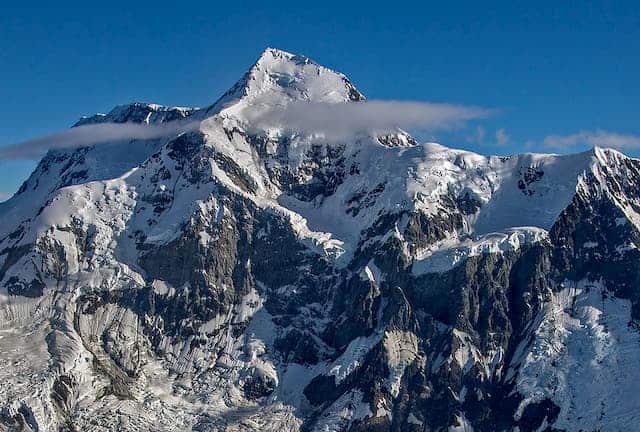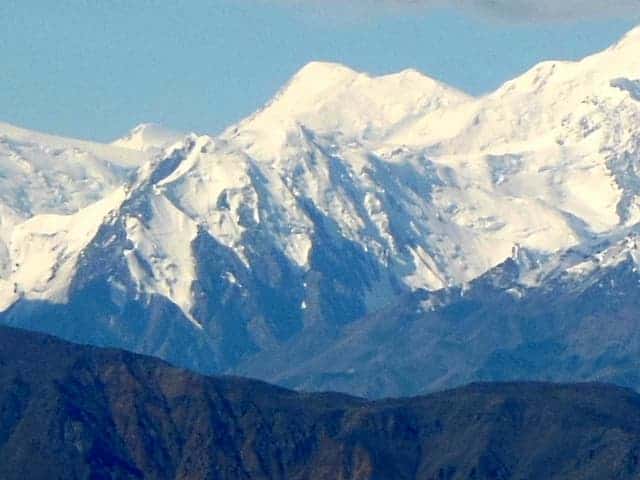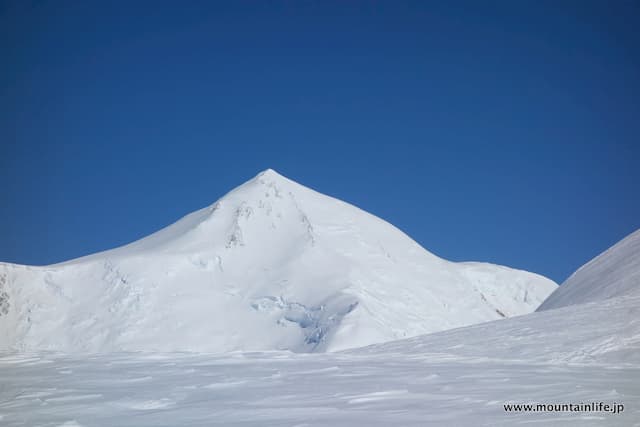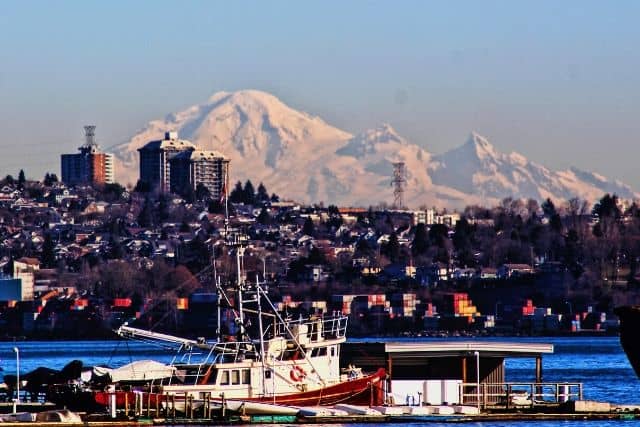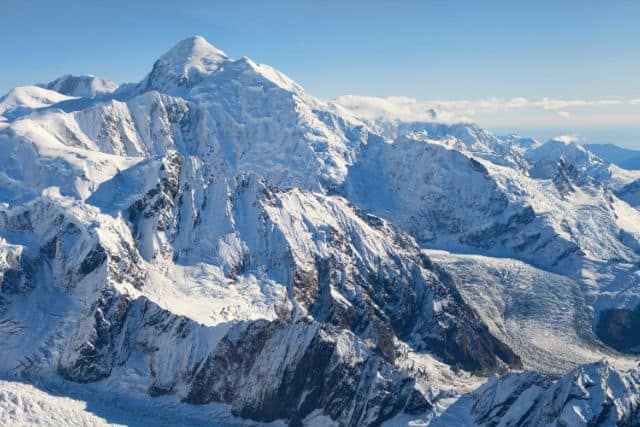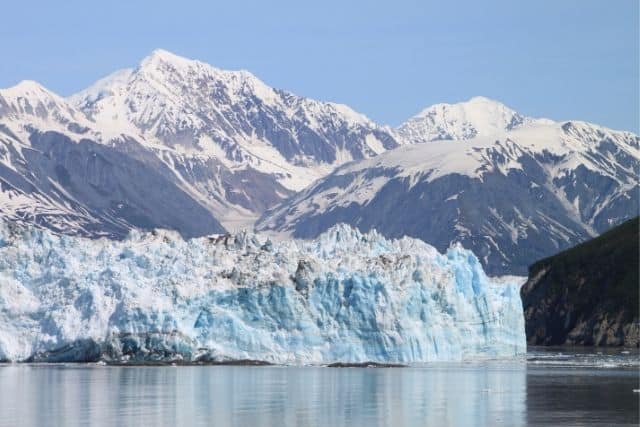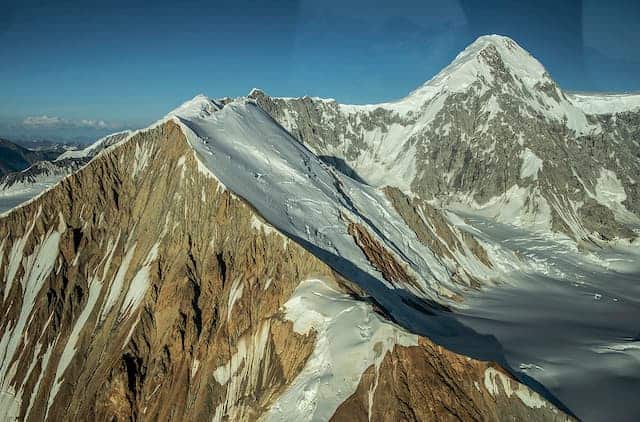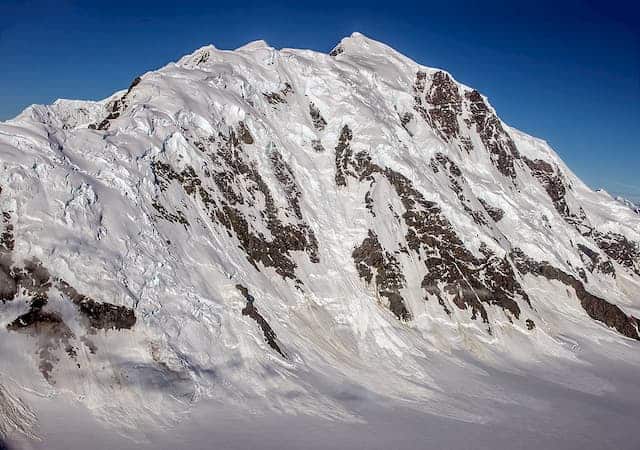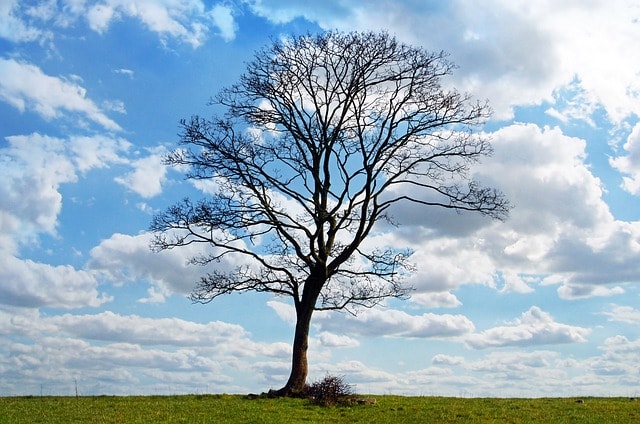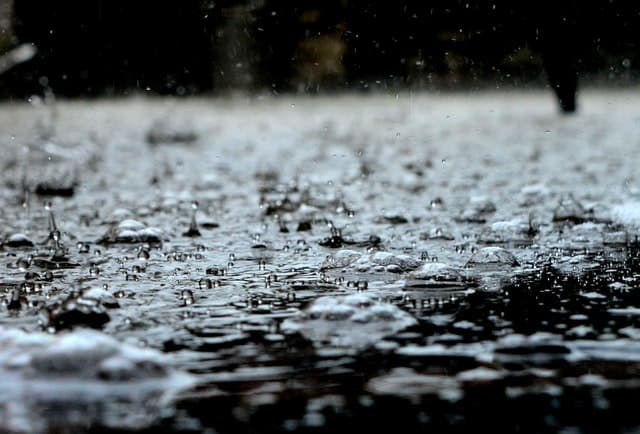13 Highest Mountain Peaks in Canada
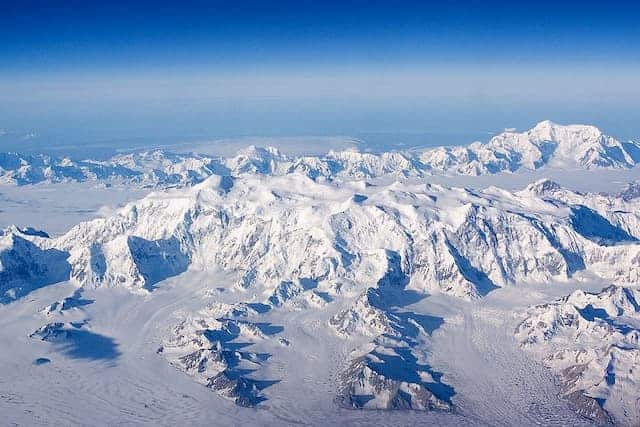
Thousands of mountain peaks jut out of the Canadian wilderness, towering high above lush green valleys and towns. Head west of the country, you’ll find yourself in British Columbia, Alberta, and Yukon Territory – home to a myriad of mountain ranges including the St. Elias Range. Rugged mountain peaks, icefields, and glaciers make up the St. Elias Range, home to Canada’s top ten summits.
From Mt. Logan in Yukon and Mt. Vancouver in Alaskan-Yukon border to the towering heights of the McArthur Peak, here are Canada’s 13 highest mountains, including a brief look at their history and geological facts.
1. Mount Logan
Elevation: 19,551 feet (5,959 m)
Location: Kluane National Park Reserve, Yukon
Range: Saint Elias Mountains
Mount Logan has many titles: Canada’s highest peak, North America’s second-highest peak, and the world’s most massive mountain. Interestingly, Mt. Logan is still rising in height due to the tectonic action. That means conquering ‘North America’s highest peak’ title is in the not too distant future.
The peak is named after Sir William E. Logan, the founder of the Geological Survey of Canada (GSC). Towering over Kluane National Park and Reserve, almost eight-tenths of Mt. Logan is entombed in ice. The remainder is moraines and rivers. To reach the summit, you’ll need to hike or fly.
2. Mount Saint Elias
Elevation: 18,009 feet (5,489 m)
Location: Alaska and the Yukon Territory
Range: Saint Elias Mountains
Mount St Elias, the second-highest mountain in Canada, sits on the Alaska – Canada border, approximately 43 km south-west of Mt Logan. It formed due to the subduction of the North American tectonic plate and Pacific plate.
Prince Luigi Amadeo di Savoia, Duke of the Abruzzi was the first to ascend Mt. St. Elias in 1741, almost 156 years after its discovery in 1741. St. Elias has brutal weather and steep slopes – no wonder its nicknamed ‘The Man-Eater’. To get anywhere near St. Elias, the best bet is to go via McCarthy.
3. Mount Lucania
Elevation: 17,260 feet (5,260 m)
Location: Yukon
Range: Saint Elias Mountains
As he stood on Mount Saint Elias, the Duke of the Abruzzi named the peak he could see in the far distance Mount Lucania, after RMS Lucania, his expedition ship. Located entirely in Canada, it’s a real beast of a mountain, taking third place in the country’s highest peaks. This northern peak of St. Elias range is made up of a series of overlapping mountain ridges.
Like Mt. Logan and Mt. St. Elias, Lucania is close to the Pacific coast, and is seldom visited; the first ascent on Lucania was made by Bradford Washburn and Robert Bates in 1937. Lucania is joined to its north-eastern neighbor Mount Steele, by a high snow saddle.
4. King Peak
Elevation: 16,972 ft (5,173 m)
Location: Yukon
Range: Saint Elias Mountains
Not to be confused with Kings Peak – the highpoint of the state Utah – which sits at an elevation of about 4,123m. Canada’s fourth-highest and North America’s ninth highest mountain, King Peak, is situated 10 miles west of Mount Logan. It is also called Logan’s satellite peak.
Some students from the University of Alaska were the first to conquer King Peak, in 1952. This relatively late climb is largely due to the tricky geographical and weather conditions. The mountain is named after William King, a commissioner of the International Boundary Commission and director of the Dominion Observatory.
5. Mount Steele
Elevation: 16,644 ft (5,073 m)
Location: Kluane National Park, Yukon
Range: Saint Elias Mountains
Mount Steele slides into #5 in the list of the highest mountains in Canada. Located in the heart of Yukon, it is also the tenth highest peak in North America. Together with Lucania, Steele forms a huge ice massif covering over 90 square kilometers and spawns many glaciers including Walsh and Chitina.
Like all St. Elias Mountains, Mt. Steele is pretty young, heavily glaciated, and highly active, which makes it more susceptible to avalanche. The July 2007 rock and ice avalanches at Mt. Steele is believed to be one of the largest slides in Western Canada.
Walter A. Wood, Harrison Wood, Joseph W. Fobes, and Hans Fuhrer were the first men to climb Mount Steele back in 1935. The mountain is named after Sir Sam Steele, the Northwest Mounted Police officer in charge of Yukon force during the Klondike gold rush/ Yukon Gold Rush.
6. Mount Wood
Elevation: 15886 feet (4,842 m)
Location: Kluane National Park and Reserve
Range: Saint Elias Mountains
Look all the way from Donjek River Bridge on the Alaska Highway and you’ll be able to see Mount Wood, Canada’s seventh highest mountain. Also referred to as Wood Peak, it is located on the northern boundary of Kluane National Park. Access only by aircraft.
Walter Wood, Anderson Blakewell, and Albert Jackman were the first to climb this massively glaciated peak. However, Mt. Wood isn’t named for Walter Wood, but rather for a Canadian geographer.
7. Mount Vancouver
Elevation: 15,979 feet (4,870 m)
Location: Alaska and the Yukon Territory
Range: Saint Elias Mountains
Straddling Glacier Bay National Park and Preserve in Alaska and Kluane National Park and Reserve in Yukon, Mount Vancouver is the eighth highest Canadian mountain. This peak is huge – over 3000 vertical meters above the icefield. First climbed in 1949, it has had only 5-6 notable ascents in total. Mt. Vancouver supports 3 summits on a north-south trending crest; the south summit, Good Neighbor Peak sits on the international border.
H. Dall named it in 1874 after Captain George Vancouver, a British Royal Navy officer who explored the southeast coast of Alaska from 1792 to 1794.
8. Mount Slaggard
Elevation: 15, 557 feet (4,742 m)
Location: Kluane National Park and Reserve
Range: Saint Elias Mountains
Buried deep within the Icefield Range, Mount Slaggard is remote – about 40km north-west of Mt. Lucania – and heavily glaciated. Confined in Kluane National Park and Reserve, it pales in comparison to other St. Elias summits in terms of size and scope of the expedition. That could be the reason South Slaggard (4370m), one of its sub summits wasn’t climbed until 1997.
Mt. Slaggard has two other sub summits on the western side: West Slaggard I (4,290m) and West Slaggard II (4,210m), both of which are known for worst snowstorms.
9. Mount Fairweather
Elevation: 15,300 feet (4,671 m)
States: Alaska and British Columbia
Range: Saint Elias Mountains
Two-third of Mount Fairweather in the Saint Elias Mountains lies in Alaska. Its peak is part of Tatshenshini-Alsek Wilderness Provincial Park, a UNESCO World Heritage Site in Canada. And, that makes Mount Fairweather the highest point in British Columbia.
Captain James Cook named it during his expedition in 1931, however this border peak belies its name. Among climbers, it’s the least favorite peak due to the deadly snowstorms and poor precipitation.
10. Mount Hubbard
Elevation: 14,950 feet (4,557 m)
States: Alaska and the Yukon Territory
Range: Saint Elias Mountains
Named for the founder and first president of the National Geographic Society, Gardiner G. Hubbard, Mount Hubbard is located approximately 60 miles north of Yakutat in the St. Elias Mountains. It straddles two countries’ national parks – Kluane National Park and Reserve on the Canadian side and Wrangell-St. Elias National Park on the American side.
In 1951 Walter Wood and team made the first ascent of Mount Hubbard, during this, they also conquered Mount Alverstone.
11. Mount Walsh
Elevation: 14,786.75 feet (4,507 m)
Location: Yukon
Range: Saint Elias Mountains
Mount Walsh is a rugged mountain in Kluane National Park and Reserve in Yukon, Canada. As you might imagine, a sheer 4,507 m glaciated peak is no picnic to climb. But Walter Wood, a famous mountaineer, and cartographer conquered Mt. Walsh.
Mount Walsh in the Saint Elias Mountains is named after James Morrow Walsh, the first Commissioner of Yukon Territory.
12. Mount Alverstone
Elevation: 14,501 feet (4,420 m)
Location: Alaska – Yukon border
Range: Saint Elias Mountains
Also known as Boundary Peak 180, this mountain, on Alaska-Canada boundary, is situated about 2 miles north of Mount Hubbard and 60 miles north-east of Yakutat. It was named after Lord Richard Everard Webster Alverstone, the boundary commissioner. In 1903’s Alaska boundary dispute, he cast the deciding vote against Canadian claims.
In 1951 an expedition party led by Walter Wood became the first to summit Mt. Alverstone. It was also the time when Wood lost his wife Foresta and daughter Valerie in a plane crash. Mount Foresta, near Mount Alverstone, is named to honor her.
13. McArthur Peak
Elevation: 14,251 feet (4,344 m)
Location: Yoho National Park, British Columbia
Range: Saint Elias Mountains
McArthur peak is an impressive glaciated peak on the north-east side of Mount Logan’s Catenary Ridge. About 2km east of the main summit there’s a secondary peak known as McArthur East. It was named for James Joseph McArthur, a Dominion Land Surveyor who’s credited to the first ascent of Mount Stephen, in 1887.
The first ascent on Mt. McArthur was in 1961, from the Hubbard glacier via McArthur’s north ridge.
Mountain peaks in Canada are too many to count. If you have a soft side for mountains, these 13 are something you shouldn’t miss out on. And, remember: Safety should always be your first priority.
References:
https://www.geonames.org/CA/highest-mountains-in-canada.html
https://www.worldatlas.com/articles/the-tallest-mountains-in-canada.html

